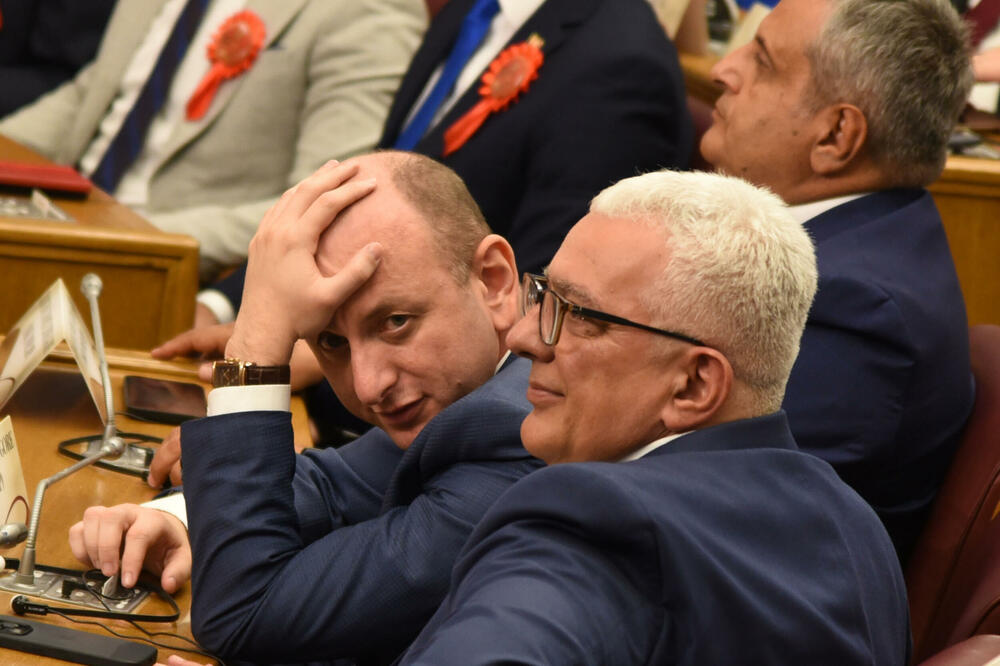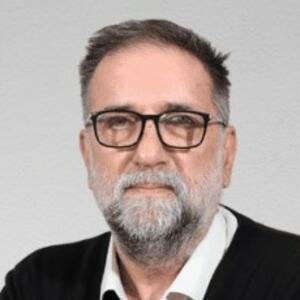"Montenegro is ready to contribute to cooperation in the region and to promote common interests and positive aspects of interstate relations in Southeast Europe."
Can you guess who uttered this slightly off-kilter phrase and where without Googling it?
No, it's not Jacob. I'll make it easier for you to think. The persona is from the Serbian bloc, but not the Dalai Lama?
Not to put you through unnecessary trouble - the quoted sentence from the beginning of the text was spoken by Slaven Radunović, head of the delegation of the Parliament of Montenegro in the OSCE Parliamentary Assembly.
Namely, in Tirana, at the beginning of the week, the Interparliamentary Forum of OSCE PS delegations from Southeast Europe was held, at which, as stated in the announcement published on the website of the Montenegrin Parliament, "the achievements and progress of Montenegro in the process of European integration" were presented.
Although, at first glance, it may seem nonsensical, the first thing that came to my mind when I saw this news was the famous case of the Romanian sculptor Constantin Brâncuși and his sculpture "Bird in Flight".
More than a hundred years ago, in 1922, a three-meter high conical bronze spike arrived at customs in the USA, so the customs officials, after much deliberation, characterized the shipment as "houseware or hospital instruments" and not a work of art that the American photographer and collector Edward Steichen brought to New York on the French steamer "Paris" for the exhibition that was to be held at the Brummer gallery.
This was followed by a lawsuit initiated by Gertrude Whitney from the famous Vanderbilt family, patron of avant-garde art and founder of the Whitney Museum because, according to the customs declaration, Steichen had to pay customs 45 percent of the estimated value of this "dish".
The dispute lasted until 1928, when judge Byron Waite ruled in favor of Brâncuși and declared "Bird in Flight" a work of art.
Of course, you will ask yourself, what is the connection between the Romanian sculptor and the Montenegrin parliamentarian Andrija Mandić?
Well, there is, because during the court proceedings it was Judge Waite who asked an important question to the sculptor Jacob Epstein, the pioneer of American modern art and Brâncuși's key witness.
"Then can an ordinary mechanic make a work of art," asked the judge slyly.
"Theoretically, he can make exactly the same work, but he would never be able to imagine it," answered the American sculptor calmly and largely determined the direction in which art will move in the future, and I would add politics, at least the current Montenegrin ones.
Because, to paraphrase Epstein, when Radunović utters the quoted sentence from the beginning of the text, it is completely clear that he & comp. could introduce Montenegro into the EU, but the problem is that this society from the pro-Serbian bloc cannot imagine what the European Union actually is.
Proof of this is the post on the X network of Milan Knežević, whom many consider the true leader not only of the Democratic People's Party, but of the entire part of the Montenegrin political scene that we colloquially call "former DF".
"There are few of us who will not be there, and there will be many of us when we meet there," Knežević wrote almost at the same time as the meeting was held in Tirana, explaining that "the only answer to the attempts to genocide the Serbian people, to seize Kosmet, to chip away at our history , the loss of identity, is the Đurđevdanski Sabor".
This announcement followed after the President of Serbia, Aleksandar Vučić, announced that on May 5 and 6, the great Easter Assembly of Serbia and Republika Srpska will be held in Belgrade and other parts of the country.
Andrija Mandić has not yet commented on the famous event, which is already being talked about in the "Serbian world", just as there are no comments from this "pro-European" part of the "former DF" on the statement of, for example, Vladislav Dajković, the president of something that is called Free Montenegro, about the fact that "a new political reality is being born in Montenegro" and "a strong political bloc headed by Milan Knežević is emerging".
The aforementioned fan Jovane Jeremić gave this assessment after Knežević's DNP reached an "agreement on organized cooperation and unified political action" with Slobodna Crna Gora. Those two parties, as announced, will participate together in the local elections in Budva and Andrijevica.
Before Free Montenegro, at the end of last year, Knežević brought Marko Milačić's Prava Crna Gora under his wing, and there is already widespread speculation that Vladimir Leposavić, a well-known Serbian national activist, who in the last parliamentary elections, will join this bloc with the "Pravda za sve" list, it narrowly missed entering the parliament.
Although there are no clear indications of what is happening within the pro-Serbian bloc, the latest events remind a lot of the political turbulence in Serbia in 2008, when the then leader of the Serbian Progressive Party (SNS), citing himself, finally concluded that enough was enough of the opposition.
"Life is short, and I know that best - I worked at the cemetery," said Tomislav Nikolić back in 2003, but Vojislav Šešelj, then already imprisoned in Scheveningen, would only find out what his former the first and most loyal collaborator thought, this time burying the Serbian Radical Party (SRS).
Andrija Mandić did not, as far as I know, work at the cemetery, but last year he came to the same conclusion, so he moved from the eternal opposition to a comfortable majority and the chair of the President of the Assembly.
He and Milan put the DF to rest, but it seems that, as Knežević said about a month ago, the two of them share most of the programmatic determinations but "have different views on some strategic processes".
What kind of differences and processes are we talking about, despite persistent insistence of journalists, "Bruce Lee from Zeta" persistently refuses to explain to this day, but it seems that this gathering of Free and True Montenegro, with possibly Leposavic, around the DNP, if not what it says hints at what it's really about.
There is a possibility that, in fact, it is a political maneuver with the aim of not losing any Serbian vote, both from the group of those who support participation in the government and from the more radical part of the voters for whom Knežević's statements are music to Serbian ears. However, it should be remembered that Vučić materialized similar "differences" by sending Nikolić into political retirement.
In that case, who will be Toma in the "former DF" and who will be Vučić, cannot be concluded only on the basis of a simple analogy with SRS and SNS, Šešelj, Vučić and Nikolić. But one thing is certain - the All-Serbian Parliament, the vote on Kosovo's admission to the Council of Europe and the announced resolution on Srebrenica in the United Nations, will show who is from the Mandić-Knežević duo, let's go back to Brâncuși, the car mechanic and who is the sculptor.
Bonus video:





